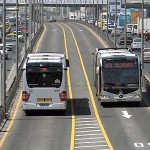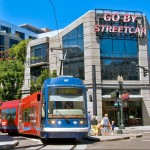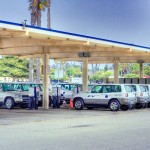GETTING STARTED
The transportation sector constitutes one of the primary end-uses of energy in a community. Finding creative ways to reduce vehicle miles traveled is proving to be a significant challenge, but also fosters an environment for new innovative solutions. By decreasing the environmental impact of their transportation system, communities can improve regional air quality and reduce their carbon footprint.





To support your organization in its pursuit of a comprehensive transportation and land use strategy, we have selected a few resources that may be helpful for getting started.
[table id=GSTLU /]
Below we have listed several approaches to reduce energy intensity in transportation systems. Additionally, we encourage you to search our comprehensive resource library that contains hundreds of best practice resources.
- Bicycles. Cycling provides numerous health and climate benefits. There are a variety of programs that cities and business can implement to increase ridership among residents and employees, such as building bike lanes or boulevards, implementing bike share programs, providing access to bike and clothes lockers and shower facilities in buildings, offering free bike safety classes and other programs and policies that make biking safer and more convenient.
- Electric Vehicles. One of the main emerging ways for cities to transition to a cleaner transportation mix is to help accelerate the adoption of electric vehicles. These range from plug-in hybrids to all-electric vehicles. Whether it’s working with stakeholders to build out the required charging infrastructure or offering incentives to prospective owners of electric vehicles, cities and businesses play a key role in helping to achieve clean transportation goals in communities.
- Vehicle Fleet Conversion. Cities, transportation agencies and businesses with large vehicle fleets can proactively upgrade their fleets to be more fuel-efficient or they can switch the fuel on which their vehicle operate, such as biodiesel, electricity or natural gas. Other efforts to operate a cleaner fleet include replacing larger buses on midday routes with smaller ones. These measures have been an effective way to not only reduce carbon emissions, but to also demonstrate leadership within the community.
- Bus Rapid Transit. BRT is transforming the way people use and imagine bus service in cities across the world. Essentially designed to be a “surface subway’ system, BRT offers an alternative to expensive and resource intensive construction of underground subway systems that reduces the amount of time buses spend in traffic. This approach has proven to be an efficient and cost-effective way for cities to decrease VMT.
- Light Rail. This mode of transportation is not new, but has seen a resurgence in popularity in recent years. The use of electricity to power a city-wide light rail network, as opposed to gasoline, diesel or natural gas, is one approach to reducing carbon emissions. However, this depends heavily on the power supply mix of the local electric grid.
